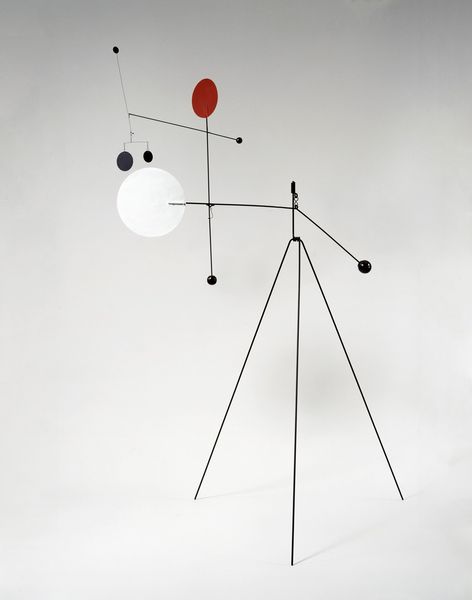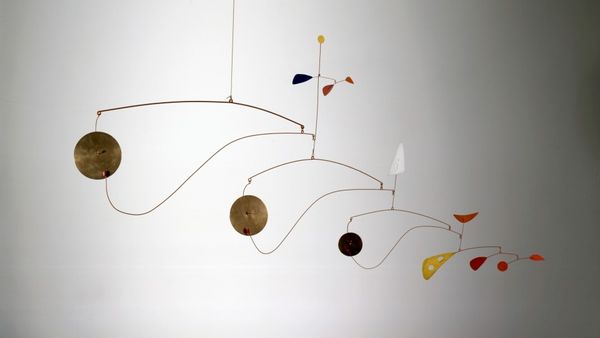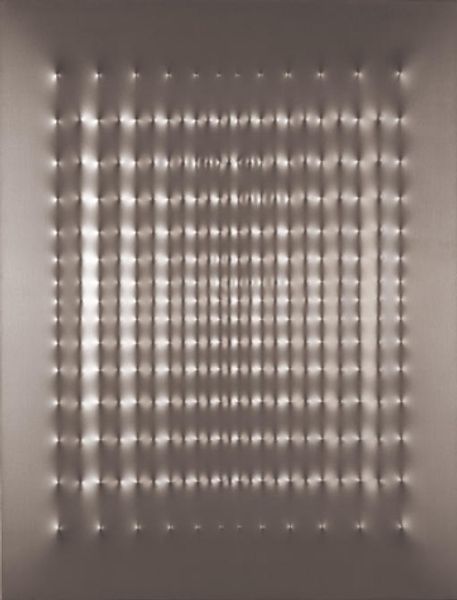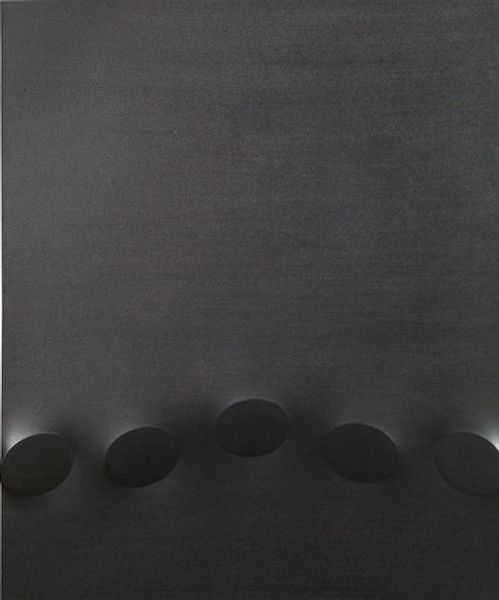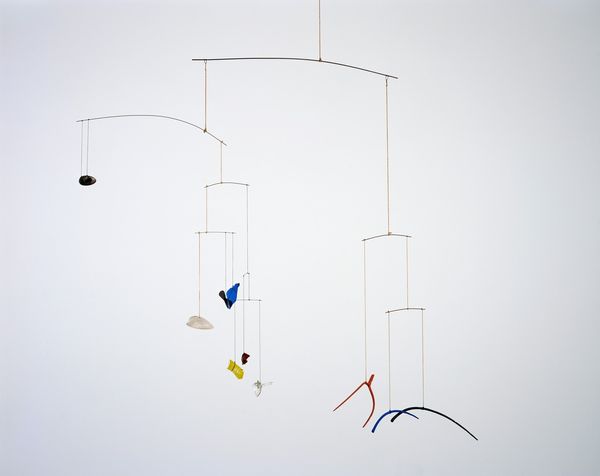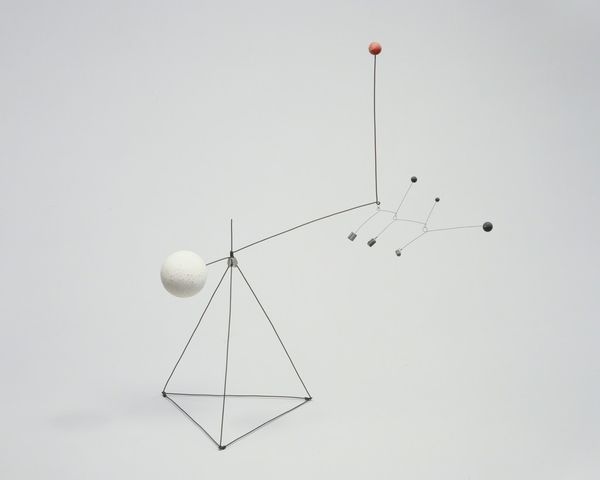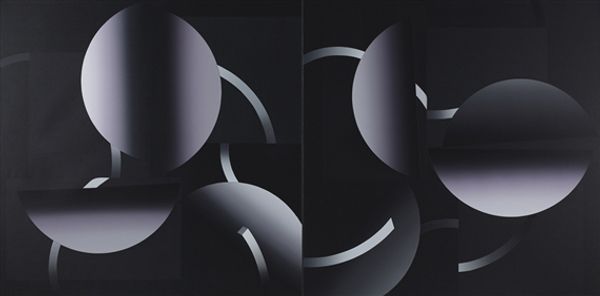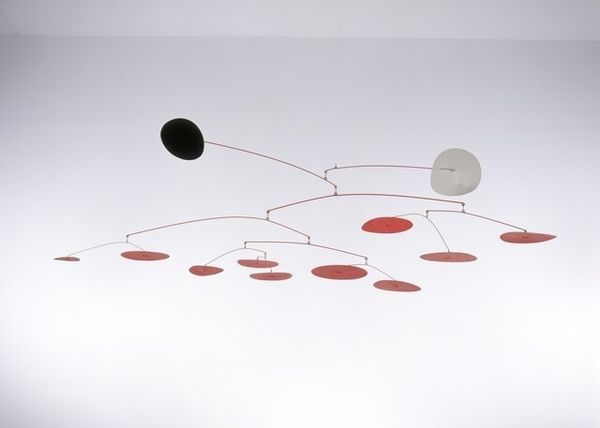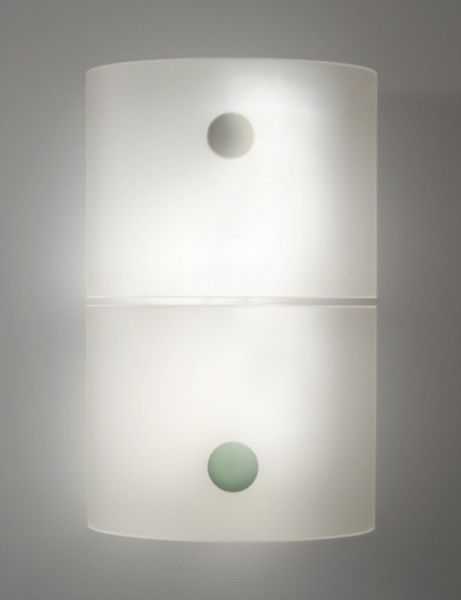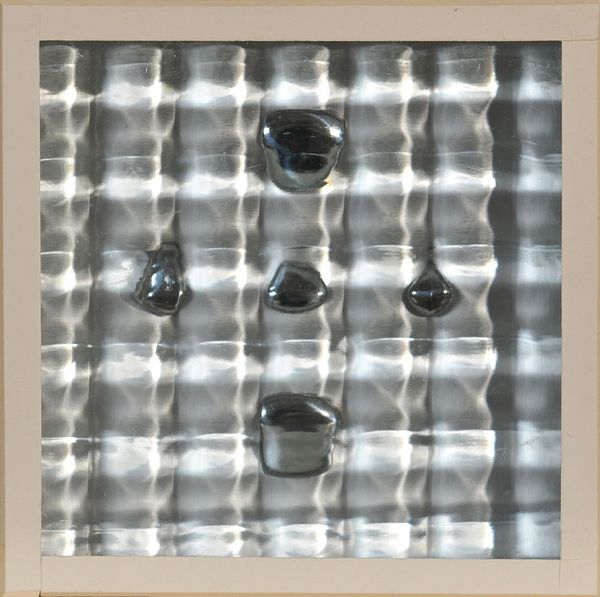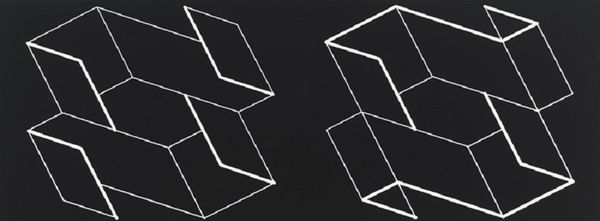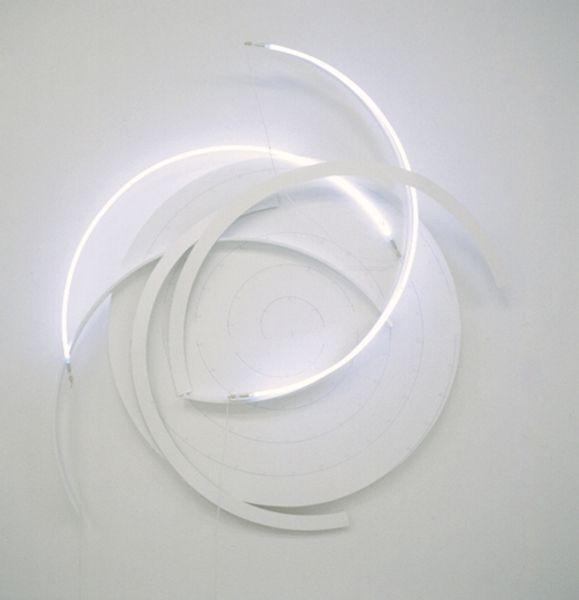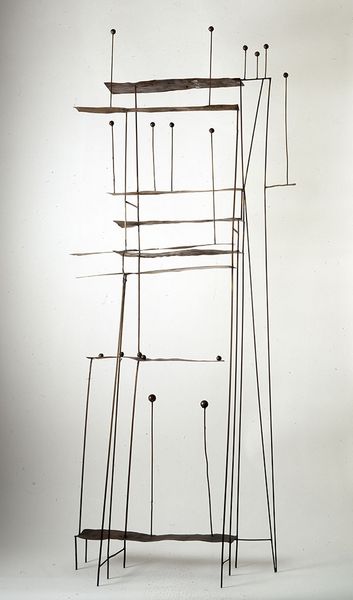
photography
#
still-life
#
still-life-photography
#
photography
#
geometric
#
abstraction
#
line
#
monochrome
Copyright: György Kepes,Fair Use
Editor: This is György Kepes’ "Untitled Photogram" from 1981, a black and white photograph featuring spheres, ribbons and geometric shapes. The stark contrast gives it such a graphic, almost ethereal feel. What do you see in this piece? Curator: The immediate draw is Kepes' radical approach to materials. This photogram highlights the properties of the objects themselves. The glass rods, spheres, and even the photographic paper were manufactured, processed by labor, and then repurposed within Kepes' art. Do you consider how the act of production influenced the final composition? Editor: Not at first, I was focused on the arrangement, the floating quality... like elements in space. How would their production tie into that? Curator: Think about the intentionality in Kepes choosing mass-produced materials. He's flattening the hierarchy between "fine art" and everyday commodities. This resonates within post-war consumer culture; Kepes elevated the ordinary, prompting viewers to consider how materials shape our understanding of the world. Editor: So, it's less about representing reality, and more about presenting these manufactured elements in dialogue with the photographic process? Curator: Exactly. Consider too, the photographic process itself as a manufacturing process – chemical reactions, specific papers and darkroom conditions all play a role in materializing the final image. Where does "art" begin and industrial production end? Editor: I see what you mean. Before, I saw an abstract composition, now I see an examination of how objects are made, and how they shape our world. It’s so cool how Kepes does this, disrupting assumptions about value. Curator: Precisely! He prompts us to look at our environment with new eyes, considering not just what is depicted, but how and why it was created.
Comments
No comments
Be the first to comment and join the conversation on the ultimate creative platform.
